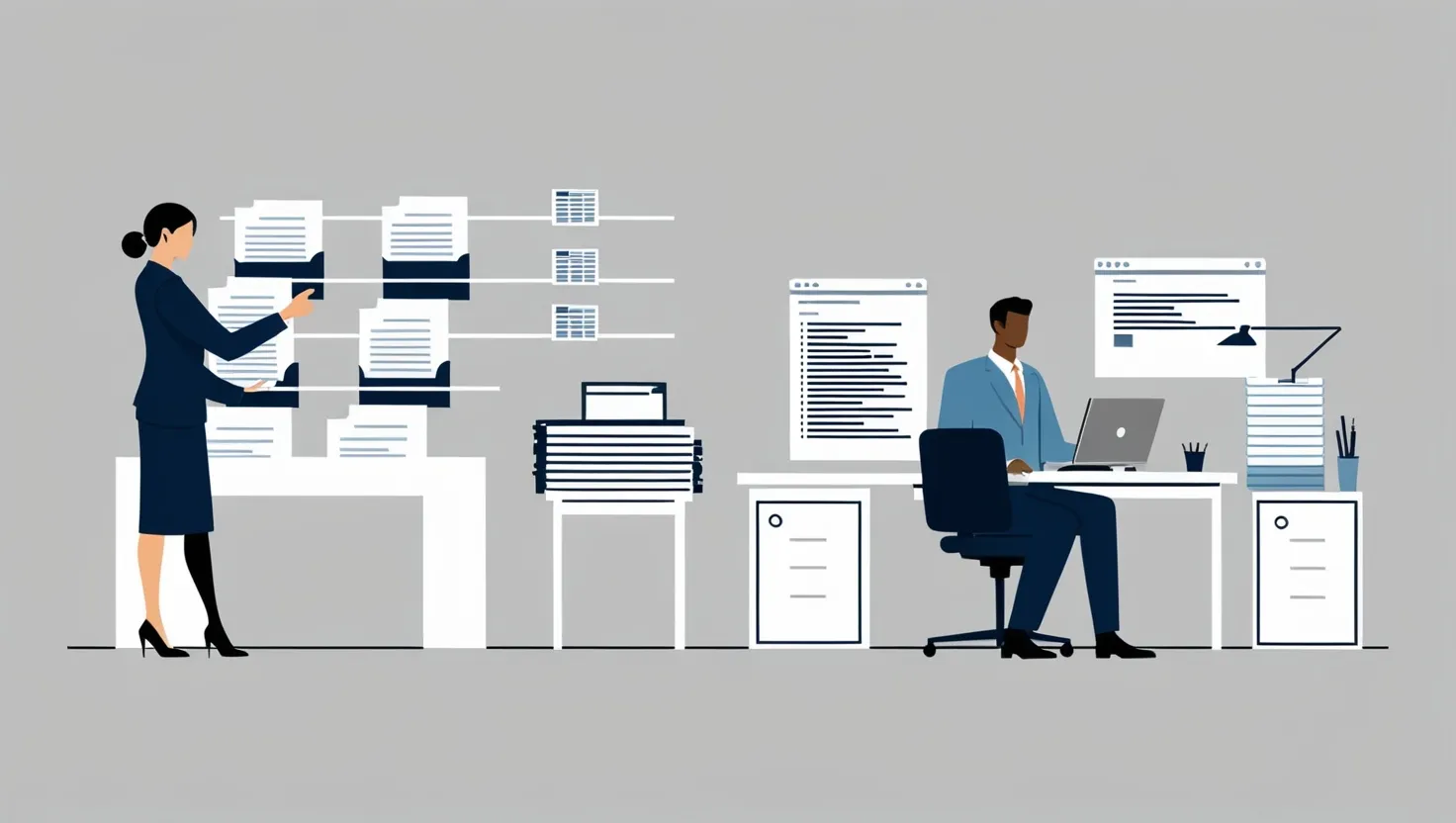When I first started managing teams, I thought I understood delegation. I’d assign tasks, send a few instructions, and wait for results. Too often, what came back required more fixes than doing it myself. Why does this happen? The real problem isn’t that people can’t follow instructions. The issue is the “handoff”—the critical moment when I pass work to someone else. It’s amazing how much time is lost explaining, clarifying, and correcting. So how do you cut the time wasted on these handoffs, and actually make delegation feel like a powerful tool rather than extra toil?
Let’s look at five frameworks that don’t just help with delegation—they make it systematic, faster, and more reliable. They’re not about dumping tasks on someone. They’re about creating an efficient handoff, where you’re investing a little time up front to save a lot more down the line.
“Efficiency is doing things right; effectiveness is doing the right things.” — Peter Drucker
I want to start with the Modular Task Blueprint. Imagine the kind of tasks you delegate regularly—monthly reports, onboarding new team members, or updating a database. If you break these down into clear components—what comes in, what steps to follow, and what should come out—you remove much of the guesswork. For each step, create a quick video or screenshot. The magic isn’t just in the documentation; it’s in making the process so clear that any new assignee can tackle the task without needing you to sit beside them. When I switched from live briefings to this kind of system, the time spent training new people fell dramatically. The real kicker? The quality of their output shot up because there was less confusion about what “done” looked like.
Ever been peppered with the same questions over and over? That’s where the Anticipated Q&A Protocol shines. Whenever I delegate a recurring task, I jot down the ten most common questions I’ve heard in the past. Then, I proactively answer them, including real examples—what’s good, what’s not, and common traps. This isn’t just a list; it’s a living document. Every quarter, I add new questions I hadn’t thought of. Suddenly, the frantic pings and clarifications almost disappear. What question do you get asked every single time you hand off a certain project? Try writing the answer once and see if it prevents your inbox from lighting up.
“Success is not the key to happiness. Happiness is the key to success. If you love what you are doing, you will be successful.” — Albert Schweitzer
Boundaries matter, especially when you care about quality. Enter the Revision Boundary System. Here, I spell out which decisions someone can make without me, and which trigger my review. For example: budget tweaks under 10%? Go ahead. Anything above that, loop me in first. If it’s a design change that affects branding? I want to review. But if it’s about layout tweaks? That’s their call. This approach reduces the endless “Can I do this?” cycle. People know when they have the power and when they need to pause. How much time do you spend re-approving micro-changes that really don’t need your stamp? Once you define boundaries, that cycle almost vanishes.
Let’s talk about feedback. The classic mistake is waiting for random check-ins or, worse, only finding out something’s veering off track when it’s too late. The Feedback Loop Template fixes this by making updates predictable and useful. Each week (or at agreed intervals), your assignee submits a short form: Where are they in the process? Any blockers? Do they need something from you? What’s their confidence level? No more vague “it’s progressing.” Instead, you get real data. With this system, my weekly syncs shrank from time-sapping status meetings to crisp, five-minute conversations that actually helped.
“How do you know you’ve delegated well? When you don’t have to chase updates or corrections—results simply arrive.”
But here’s the piece almost nobody talks about: was the delegation actually worth it? That’s where the Delegation ROI Tracker changes the game. For every handoff, measure the time and energy spent up front (making docs, training videos, writing FAQs). Then, track how much time you save each month. Add in error rates and how fast things get done compared to before. You might be shocked—some tasks actually cost more in oversight than just doing them yourself. But others? You’ll find compounding returns: freed-up hours, smoother workflows, stress off your shoulders. This data tells you exactly which tasks should be handed off next—and which ones you should reconsider.
“Don’t tell people how to do things, tell them what to do and let them surprise you with their results.” — George S. Patton
Here’s an interesting angle: most delegation systems ignore that people learn differently. Video steps help visual learners; written blueprints help detail lovers. When you combine formats, you cover more bases. I also find that when a process is visible (like with video or well-designed templates), it’s easier to spot where things drift, and easier to bring someone back on track quickly.
What about when things go wrong? The best frameworks turn mistakes into improvements. Each time someone asks a new clarifying question, or a handoff falters, I update the blueprint or Q&A guide. Over time, these resources become sharper and future-proofed, tailored exactly to the team’s needs. Have you ever turned a delegation failure into a better process? If not, try treating each misstep as a chance to add a preventive note to your system.
Another subtle benefit: standardized delegation builds team confidence. When people know exactly what’s expected and the boundaries of their authority, anxiety drops and initiative rises. They don’t have to double-check every tiny step. That sense of ownership means they’re more likely to innovate within the guardrails you’ve set. This is especially crucial when scaling a team, bringing in freelancers, or managing remote work across time zones—where you can’t afford constant real-time oversight.
The reason most delegation goes wrong isn’t lack of skill but lack of clarity. We make people guess, and they fill in the gaps with their own best logic—which rarely matches ours. These frameworks remove ambiguity. And as I’ve found, they’re most powerful when treated as living systems, not static checklists. Every handoff, every “oops,” every win—these feed back into improving the blueprints.
“Great things in business are never done by one person; they’re done by a team of people.” — Steve Jobs
Think about your own workflow: which recurring task always feels like a slog to hand off? What would happen if you modularized it, pre-answered the usual questions, drew a clear revision line, set up a tight feedback loop, and then measured the ROI? Even if you started with one task, imagine the impact as you expanded these habits across your workload.
What’s fascinating is that, over time, the frameworks themselves drive cultural change. Teams get used to transparent handoffs, owning outcomes, and focusing attention where it’s really needed. People start thinking in terms of “how can this be transferable?” rather than “only I know how to do this.” That shift is subtle, but it’s the seed of real productivity gains—and it’s where true time savings compound.
So, are you delegating as a time cost, or as a time investment? The best frameworks tip the balance toward the latter, turning painful explanations and corrections into a machine for scaling yourself. Test it: pick one task, standardize the handoff, and see what happens. How much time do you get back? What do you do with that reclaimed focus? Maybe, for the first time, you can spend more time working on what only you can do. Isn’t that the real power of delegation done right?






